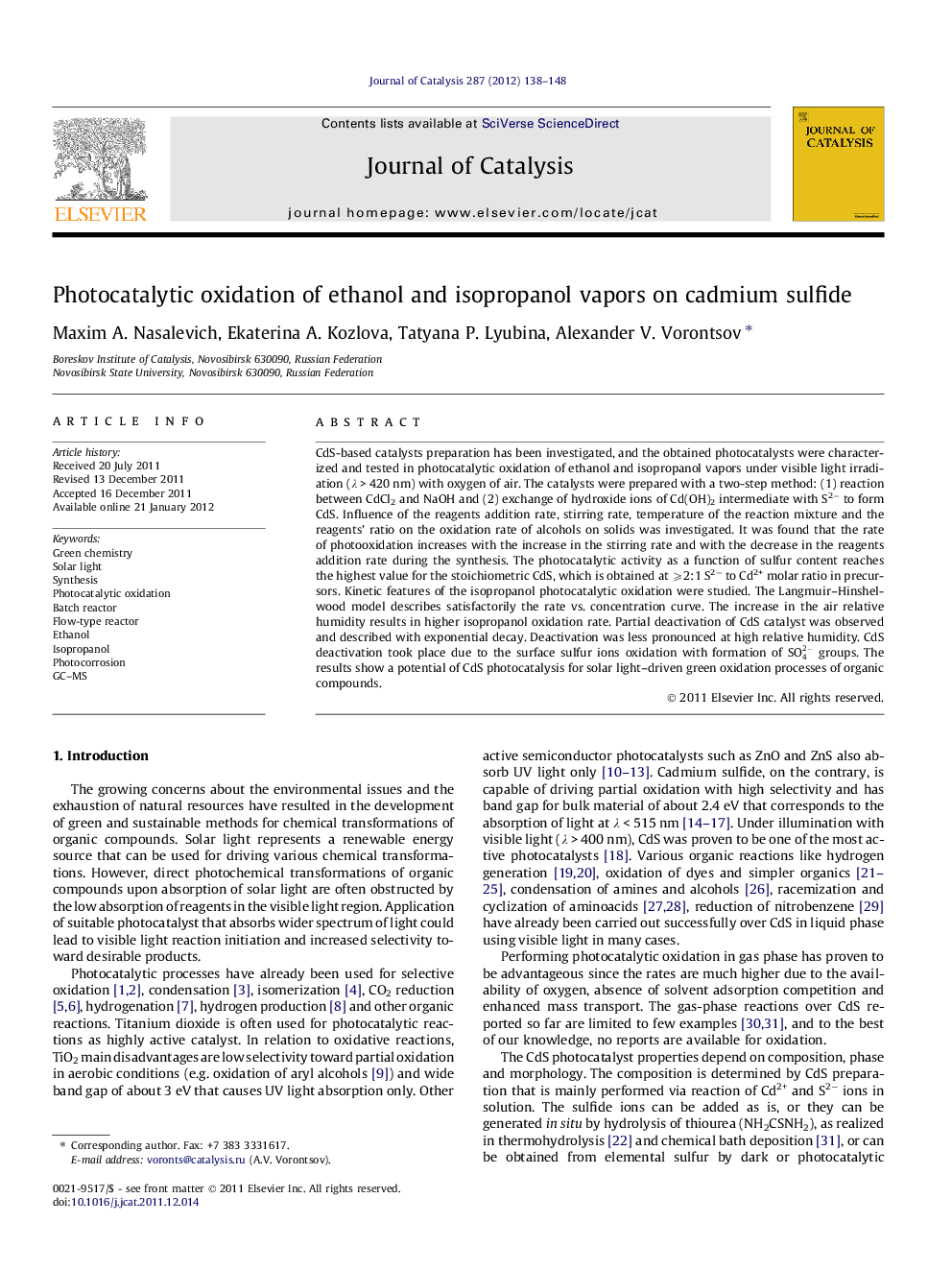| کد مقاله | کد نشریه | سال انتشار | مقاله انگلیسی | نسخه تمام متن |
|---|---|---|---|---|
| 61507 | 47585 | 2012 | 11 صفحه PDF | دانلود رایگان |

CdS-based catalysts preparation has been investigated, and the obtained photocatalysts were characterized and tested in photocatalytic oxidation of ethanol and isopropanol vapors under visible light irradiation (λ > 420 nm) with oxygen of air. The catalysts were prepared with a two-step method: (1) reaction between CdCl2 and NaOH and (2) exchange of hydroxide ions of Cd(OH)2 intermediate with S2− to form CdS. Influence of the reagents addition rate, stirring rate, temperature of the reaction mixture and the reagents’ ratio on the oxidation rate of alcohols on solids was investigated. It was found that the rate of photooxidation increases with the increase in the stirring rate and with the decrease in the reagents addition rate during the synthesis. The photocatalytic activity as a function of sulfur content reaches the highest value for the stoichiometric CdS, which is obtained at ≥2:1 S2− to Cd2+ molar ratio in precursors. Kinetic features of the isopropanol photocatalytic oxidation were studied. The Langmuir–Hinshelwood model describes satisfactorily the rate vs. concentration curve. The increase in the air relative humidity results in higher isopropanol oxidation rate. Partial deactivation of CdS catalyst was observed and described with exponential decay. Deactivation was less pronounced at high relative humidity. CdS deactivation took place due to the surface sulfur ions oxidation with formation of SO42- groups. The results show a potential of CdS photocatalysis for solar light–driven green oxidation processes of organic compounds.
Nanosized cadmium sulfide photocatalyzes partial oxidation of alcohol vapors with oxygen of air at room temperature under visible light with quantum efficiency up to 6.6%.Figure optionsDownload high-quality image (292 K)Download as PowerPoint slideHighlights
► Ethanol and isopropanol undergo partial oxidation in gas phase on CdS under visible light.
► Highest activity is obtained on stoichiometric CdS prepared at closer to equilibrium conditions.
► The oxidation follows Langmuir–Hinshelwood model, and the rate increases with humidity rise.
► CdS deactivation occurs and is attributed to oxidation of surface sulfide to sulfate anions.
► The increased humidity decreases the deactivation and allows obtaining quantum efficiency up to 6.6%.
Journal: Journal of Catalysis - Volume 287, March 2012, Pages 138–148